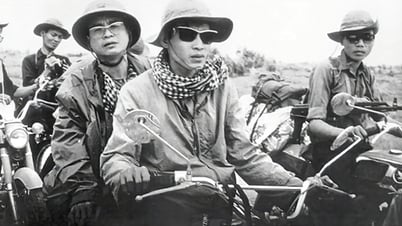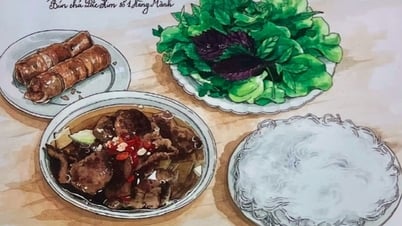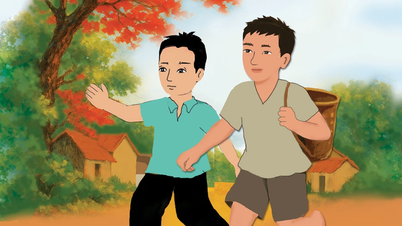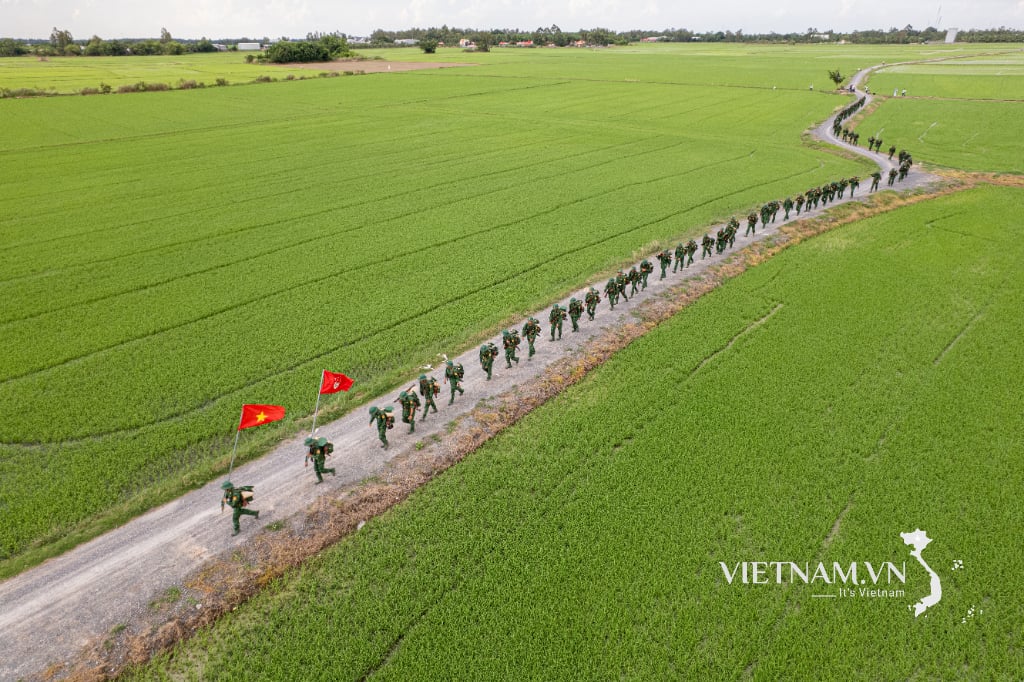Every day at the beginning of a new crop season, my friends and I would leave early in the morning to feed the buffaloes their fill of grass, to start the farmers' workday in the village. They would yoke the buffaloes, hold bamboo whips in their hands, and make the first plowing strokes with the "tắc, rì" (right, left) sound along the length of the field. At that time, we kids would jump into the river to bathe, then rush home to eat breakfast. Occasionally we would have a bowl of rice, but mostly we would have sweet potatoes and cassava to fill our stomachs. Then we would play all sorts of games, until the plowmen would unyield the buffaloes, lead them down to the river to bathe, rub off the mud, and then ride them to graze.
Sometimes I arrived a little early, standing by the edge of the field, looking at the straight plowed lines. Each batch of muddy soil was turned up, shining, and stacked up from one bank to the other. Sometimes I heard the plowmen complimenting and criticizing each other. That the plowed lines were very straight and beautiful, or that this place was plowed crookedly (left out of the plow, covered up with soil to cover up the unplowed areas), that place was plowed crookedly (plowed crookedly, some places were plowed and some were not). That was because each plowman had a person with him, called the corner hoeman. The fields were usually square or rectangular, the buffalo could not go close to the plowed lines in the corners, the hoeman had to handle those places by using the hoe to turn them up, or had to walk around to find the plowed lines that were left out, or slanted, to hoe and harrow them carefully. The work of the plowmen and the hoemen was very rhythmic, so that when the plowing session was over, the field had no "living soil" left. Because if not, when the harrow encounters hard soil, the teeth of the harrow will break, and the harrower will blame the previous group of plowmen. Or if the harrowing is done over and over again, but the soil in the false plowing lines is still not torn up, the planters will not be able to plant the seedlings.
The introductory lesson when I was a young man carrying a plow to the field, my father often advised me "don't plow the field too much, my son", or "try to drive the buffalo to the right side as close as possible, so that the plow blade can hook the corner as much as possible, the hoeer will have an easier time". Those two introductory lessons for the first day, at that time I always considered them as the sacred duty of the plowman!
Then, when I stepped into life, the day came when I picked up a pen. Every time I sat in front of a page, before the restlessness at night, I imagined those lines as the furrows of my youth. How to write correctly, write without spelling or syntax errors, write "deliciously" so that my editing colleagues would have less trouble. So that when I finished a manuscript and submitted it to the editorial office, I would not be criticized or reprimanded. Struggling with each word to write "smoothly and beautifully" is also the hard work of a writer.
That's why, at that time, every week when reading the "weed picker" column of several newspapers, which specializes in picking up incorrectly placed headlines, misspelled sentences or grammatically incorrect sentences... to criticize and "tease", I learned many things. Although they wrote lightly, every time I didn't see my name in that column, the reporter felt relieved. Then I thought, why are those people so good at "observing", or explaining each sentence, each paragraph so convincingly. Taking the time to read and point out to colleagues the mistakes of writers, that is also professional civilization, since the beginning of journalism. In the past and present, there have been many famous people in this field.
Sometimes I absentmindedly think, the furrows in the field or the lines of words on paper, are no different!
Source: https://thanhnien.vn/nhan-dam-duong-cay-va-con-chu-185250621174950409.htm



























































![[Maritime News] Wan Hai Lines invests $150 million to buy 48,000 containers](https://vphoto.vietnam.vn/thumb/402x226/vietnam/resource/IMAGE/2025/6/20/c945a62aff624b4bb5c25e67e9bcc1cb)














![[Infographic] Party Committee of the Ministry of Culture, Sports and Tourism: Marks of the 2020 - 2025 term](https://vphoto.vietnam.vn/thumb/402x226/vietnam/resource/IMAGE/2025/6/22/058c9f95a9a54fcab13153cddc34435e)


























Comment (0)